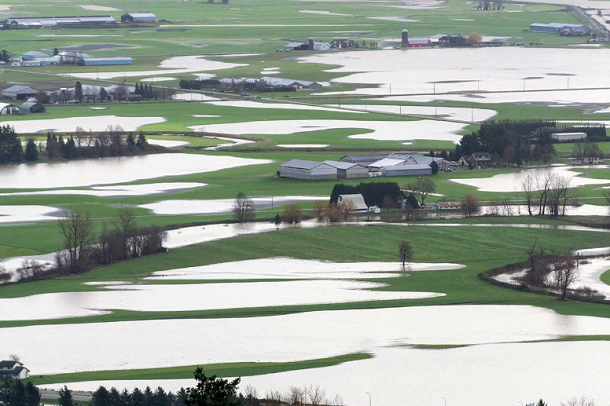Natural Disasters: Considerations when you have a Pipeline on your Land
Print this Article | Send to Colleague
Natural Disasters: Considerations when you have a Pipeline on your Land
Natural disasters are harrowing and can be really frightening when they impact your family, property and livelihood. The effects of the fires, floods and landslides in British Columbia in 2021 will be felt by those landowners for a long time. These disasters can change the contours and topography of the land through erosion, scour and debris left behind, and the drainage that was present before the disaster may not be there anymore.

Figure 7 – Flooded farmland in British Columbia.
It’s natural for people to want to get to work, clean up the debris and get everything back to normal as soon as they can, but there are some things that landowners must take into consideration before going into action, and pipeline companies have an obligation to provide you with the information you need to do this work safely.
If you have a pipeline on your property, flooding may have reduced the depth of earth cover over the pipe so that it may no longer be safe to drive across it, even light equipment. Contact the pipeline company to request consent before driving across the pipeline or moving any soil to confirm that it is safe to do so. Pipeline companies are required to provide that information in writing, and it is information that you need to keep yourself and your family, as well as your property safe.
As always, any time that you are replacing fences/fence posts, removing earth cover, adding earth cover or changing/clearing drainage paths near a pipeline (30 meters either side of the pipeline), it is a ground disturbance. When you contact the pipeline company, you not only need to confirm the location of the pipe, but you also need to ensure that the depth of earth cover over the pipe is still adequate.

Care must be taken when adding soil, such as building a berm, so pipeline company and/or power line company consent is required. A berm changes accessibility for maintenance of a buried infrastructure, but also reduces ground to wire clearance when there is an overhead power line.
If you are hiring a contractor to do some work on your land, make sure they know that there is a federally regulated pipeline on your property, and that there are regulations they must follow that include contacting the pipeline company when they are planning the work and prior to starting it.
Click here for more information about the CER damage prevention regulations.
Author: Shannon Neufeld, Canada Energy Regulator

